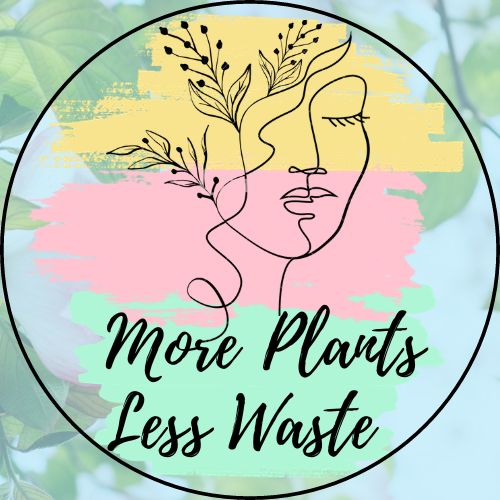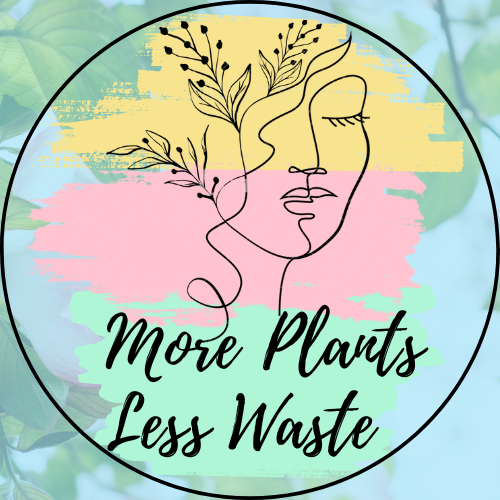How should you start changing to zero-waste? There were three zero-waste changes I started with; reusable bags, reusable straws, and glass containers. I know, it sounds generic but this was the most feasible way for me to incorporate this into my lifestyle. By no means did I start these three changes all at once either.
I started thinking more about the impact we have on our environment after having my son. Especially with global warming being so severe. I wanted my son to have good habits and understand the impact his decisions had from the beginning. Then, it wouldn’t be as hard of a lifestyle for him to live because it would be second nature to him. I’m obviously much older than him and my habits are pretty much established. So, I found it very uncomfortable and weird to try to break these habits. It’s because I was so comfortable in the habits I already had established, breaking them felt really difficult at times.
Once I honed in on what my true reason was for developing a zero-waste lifestyle, it helped me make these changes a bit more gracefully. Even though it’s hard staying consistent at first and it feels extremely weird, when you know why you’re making these changes, it starts to get easier and easier. I have an extreme personality as well, which makes me want to do things in an all-or-nothing manner. It took some time for me to realize that it’s really the consistent and small changes that make the biggest and most lasting impacts.
Reusable Bags
Going from plastic bags to reusable bags was the first thing I switched when deciding to head towards a zero-waste lifestyle. To be quite honest, I didn’t even give plastic bags at the store a thought. You go to the store to buy what you need (and sometimes what you don’t), you check out, get the bag, and go on your way. Plastic bags were part of the shopping experience. After becoming a mother and learning the environmental impact each individual has, I knew I wanted to change my habits. I started doing some research and learning about how severe our climate change really is. When you know the impact, your decisions truly have, it makes you shop and live more intentionally.
I started by buying 2 bags from a local farmers market to start with, about $3 each. Then, at my job, I got a free one. Later, my sister gave me an old college bag she had, and before you know it, over time I’ve collected about eight different reusable bags. However, I only bought two of them. When you take initiative and buy your first reusable bags or talk to your friends and family about what you’re doing and why people will soon be throwing them at you. The amount of people that will randomly have reusable bags to give away or stores and jobs that have them to give away for free, is mind-blowing.
The hardest part about using a reusable bag is remembering to bring it into the store! I started with my two new bags, and I honestly cannot tell you how many times I would forget to bring them. I’d be standing in line ready to check out, then realize I oh-so-conveniently left my bags in the car. I then leave the store feeling extremely guilty as I walk with plastic bags in hand to see my reusable ones sitting on the seat of my car. Not only would I forget to bring them into the store, but I’d forget to even put them in the car sometimes.
After a couple tries, I found some easier ways to finally remember to bring them into the store and back to the car after unloading them. I would have the bags folded inside my purse or bag I was using. If I wasn’t carrying a purse or bag at the time, when getting in the car I would put the bags beneath my legs in whatever seat I was in. As annoying as it was at times, I surely remembered. After I get home and unloaded the groceries, I would throw the bags down my stairs to the backdoor. (Lazy I know, but I don’t feel like walking down and up the stairs again most times). So whoever is the next person to go through the back door, whether for laundry or to leave, hangs the bags on our backdoor which leads to the garage and car.
I had to get into this habit routinely for it to really become second nature. There were definitely times I still forgot, either forgetting to bring them in the store or forgetting to throw them down the stairs. But, after time and a lot of repetition, it becomes a lot easier to remember. It begins to feel more natural. My suggestion is to find what tricks or changes you can make so that you’ll remember. Time, repetition, and consistency are key.



Low-Waste Straws
The next change I made was straws. It sounds simple or small, but it has a huge impact. Straws do not biodegrade. They will not compost and will not biodegrade naturally, in any way. We use straws for everything. Drive-thru, restaurants, homes, parties, and more. It almost sounded silly to me until I read about this topic for myself. If all I have to do is drink out of a bamboo or wheat straw to help this plastic epidemic, then that’s a habit I can surely change.
To begin this non-plastic straw journey, I started with metal and silicon straws. I instantly stopped buying plastic straws and found Amazon had packs of metal straws for an average of about $5. I also had some family members gift me metal and silicone straws as well. However, it was definitely a weird habit to change. Using them isn’t what was weird, but more so getting used to not throwing them away and washing them instead. Although, most straws I’ve gotten have come with proper scrubbers for cleaning them and they’re very easy to clean.
Metal and silicone straws aren’t necessarily the best ‘zero waste’ option but more so a ‘low waste’ option. However, I was still very much beginning my research at this time. There are only certain metals that will actually biodegrade naturally, and silicone is not an easy thing to dispose of. However, both of these materials do promote long-term use and are reusable. Plastics are single-use products and are thrown away, whereas metals and silicones you can wash just like your dishes. Using reusable straws was definitely a great step forward. Especially in just changing the habit.
I am now looking to use bamboo and wheat straws. I do still have the metal and silicone straws I was using before, however, I want to get bamboo and wheat straws both, to see which I really like best. Both of these plants are naturally biodegradable and compostable. These straws are slowly starting to become more common, which means the more people who use and demand this product, the more affordable and easily accessed it will become.
I started with bags and once I got comfortable, I got into the straws. I found switching which straws I used to be a bit easier of a transition. However, it took time, repetition, and consistency just as before.



Glass Containers
One of the only reasons using glass containers was a different switch compared to bags and straws was the price of it. Bags and straws I just stopped using it right away. I stopped using one product and bought a reusable or biodegradable version of the same product. It was an immediate change and satisfaction. Plus, the replaced products were cheap, between $2 and $5. Glass containers can sometimes be pricey. Switching to glass containers I took a lot slower approach and either repurposed them myself or found them at local thrift stores.
Most of my glass jars come from stuff we buy and run out of, like jam or sauces. Whenever we run of out that item, I wash it well and continue to reuse it. I have also found glass jars at thrift stores for great prices! I usually find my bowls and larger glass containers at thrift stores for under $3. Local thrift stores have great finds for reusable products just like this. I have also found mason jar sets at Walmart for under $7 as well.
Glass containers and jars are also a step towards ‘low-waste’ rather than ‘zero-waste,’ as glass doesn’t biodegrade naturally. It’s a material that can weather over time but ultimately will not biodegrade. However, it is a material that can be recycled, it can be ground or remelted to be reused indefinitely. Glass is a great step towards a low-impact lifestyle, whether it’s ‘low waste’ or ‘zero-waste.’ Watching my collection slowly grow over the years has been fun as well.
Glass containers do offer some great benefits other than being low waste. I was concerned about BPA and other toxins used in the process of making plastic leak into our food when reheating. Glass is a lot safer when reheating food, whether in the microwave or oven. Glass containers are also more durable and last longer. They even keep the food fresher for a longer period of time. They are well worth the small investment or patience. Glass is an affordable low-waste switch that gives you safer and fresher food.



These three switches are ‘basic’ or common, but they’re easy to start with, affordable, and really do work. I found the beginning of my journey with zero waste to really be a great teacher in consistency and patience. It’s a change worth making that leaves a lasting impact. It not only benefits our environment but our personal growth as well. Whether it’s low waste, zero waste, or just reusable bags, any change is worth it and impactful.




















